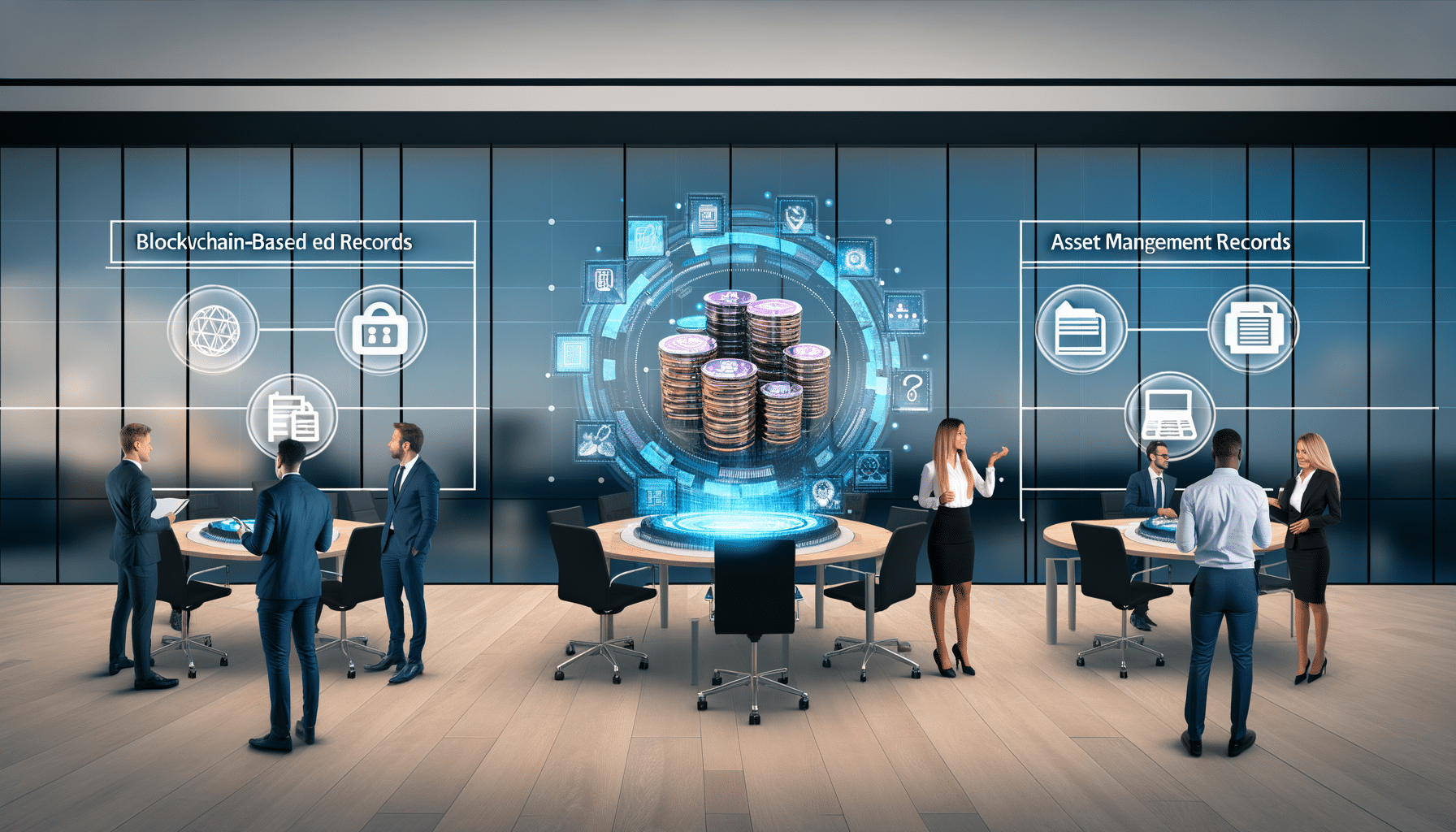Revolutionizing Asset Management with Blockchain Technology
In today’s fast-paced digital landscape, the secure and efficient management of asset records is an ever-growing challenge. For those in charge of record-keeping—often under the purview of Legal, Finance, and Compliance departments—this task can become a labyrinth unless we harness the best tools available. Enter blockchain technology—a groundbreaking solution that is shaping the future of asset management in unprecedented ways. Today, I would like to guide you through how blockchain can revolutionize asset management records and why it’s a game-changer for the industry.
Why Traditional Asset Management Falls Short
For decades, managing asset records has been a painstaking manual task fraught with inefficiencies and risk. Traditional systems rely heavily on paper documentation or fragmented digital databases, which are susceptible to errors, tampering, and mismanagement. The result often causes:
- Data inaccuracies due to human error
- Security vulnerabilities due to centralized data storage
- Restrictive accessibility with cumbersome retrieval processes
- Compliance challenges due to stringent regulations
These drawbacks not only waste valuable resources but also make it difficult for organizations to maintain transparency and trust with stakeholders.
The Role of Blockchain in Asset Management
Blockchain technology offers a revolutionary approach to managing asset records—one that inherently rectifies many of the issues plaguing traditional systems. How does it accomplish this? By providing:
1. Tamper-Proof Secure Records:
Blockchain’s distributed ledger technology ensures that data entered cannot be manipulated or tampered with, providing a single source of truth. Once added to the blockchain, asset records become immutable and verifiable.
2. Enhanced Transparency:
Every transaction or modification in the blockchain is visible to authorized network participants. This level of transparency helps in building trust not only within the organization but also with external stakeholders.
3. Streamlined Compliance:
Blockchain’s robust audit trail facilitates regulatory compliance by providing immutable records that are open to examination but highly secure from unauthorized alterations.
4. Cost-Efficiency:
By automating record-keeping and eliminating the need for intermediaries, blockchain reduces the cost and complexity of asset management.
5. Real-Time Tracking and Insight:
Asset records on blockchain can be updated in real-time, ensuring that data remains current and reflective of the actual asset status at any given time.
Implementing Blockchain in Asset Management
As a founder deeply invested in cutting-edge technologies like blockchain, I’ve seen firsthand the transformative power it holds. If you’re considering integrating blockchain into your asset management processes, here are a few steps to ensure smooth implementation:
1. Evaluate Your Current System:
Assess the existing processes to identify areas where blockchain can provide significant improvements in security, transparency, and efficiency.
2. Choose the Right Blockchain Platform:
Not all blockchain platforms are created equal. Consider factors such as scalability, user-friendliness, and the level of decentralization you require.
3. Pilot and Test:
Begin with a pilot project—not the full-scale deployment—so you can iron out any issues or challenges specific to your organization with minimal risk.
4. Train Your Team:
Empower your staff with the necessary skills and knowledge to make the most of blockchain technology. Investment in education will pay off in terms of efficiency and productivity.
5. Monitor and Adapt:
Like any new system, blockchain-based asset management requires continuous monitoring and adaptation to meet evolving business needs and regulatory requirements.
The Future Beckons
Blockchain technology stands at the forefront of a new era in asset management, offering capabilities that were once the stuff of dreams. It’s a dynamic field that holds incredible potential for those willing to embrace change and innovation. By integrating blockchain into asset management systems, organizations can achieve unparalleled levels of accuracy, security, and efficiency.
Drawing from my journey with RecordsKeeper.AI, I am convinced that embracing blockchain is not merely a strategic advantage—it’s a necessity for any enterprise aiming to stay competitive in today’s digital age. If you found this exploration helpful, I invite you to delve further into the vast potential of emerging technologies and join me in leading the charge towards a more secure, transparent future in asset management.
So, what’s your blockchain strategy? This is your opportunity to revisit how you manage asset records and take a step into the future.
Let’s revolutionize asset management together,
Toshendra Sharma








